#California Mantis
Text

a California mantis sneaked into my house the other day and i found out she was a female from one of my nature books and she's at the age for breeding so i set her free so she could find a mate and make babies, my sister told me she been seeing more of them this time of year, and there truly cute! I named her Ezekiel!
34 notes
·
View notes
Text

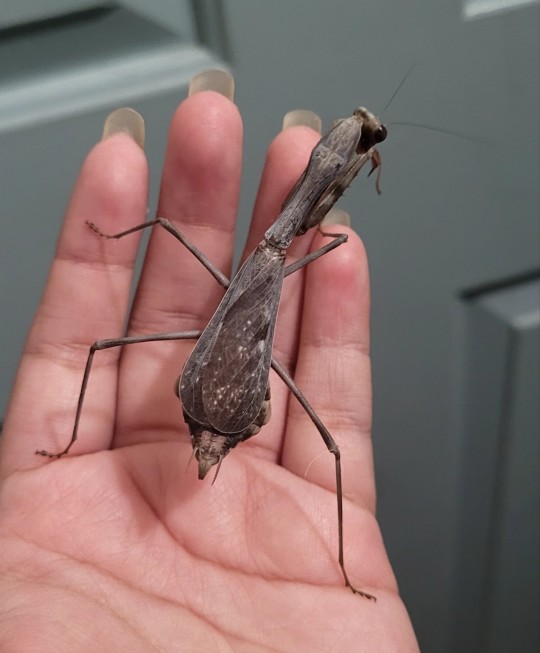
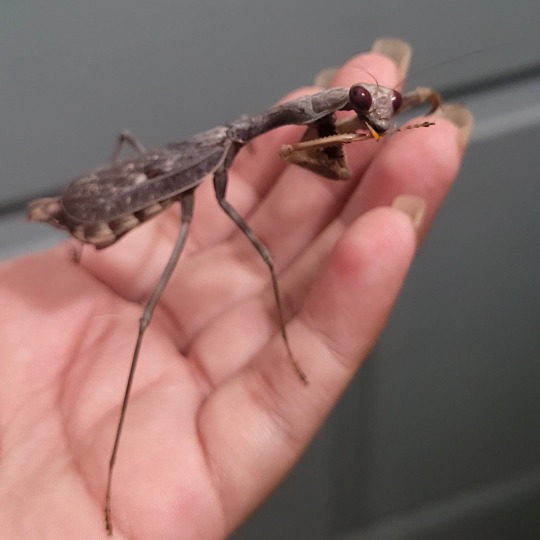
@deceitfulpigeon submitted: Found this beautiful praying mantis on my doorbell! (Concord, CA)
#never seen a grey one! #they were a lovely surprise visitor
Oh she was just coming to visit! She was about to ring the bell, I bet. I hope she knows she’s perfect....
(P.S. - Added your tags to your text so they aren’t confused with my tags!)
212 notes
·
View notes
Text
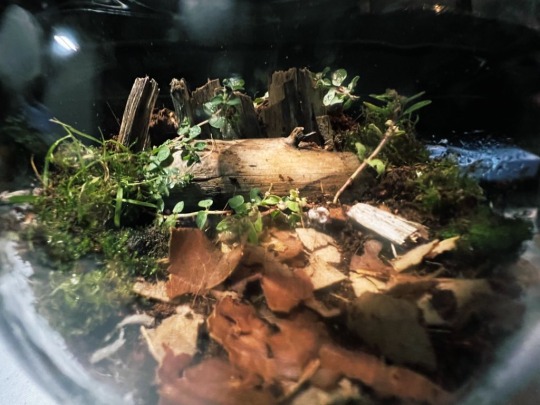

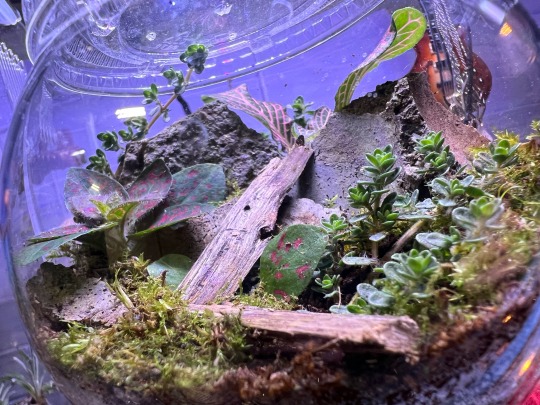


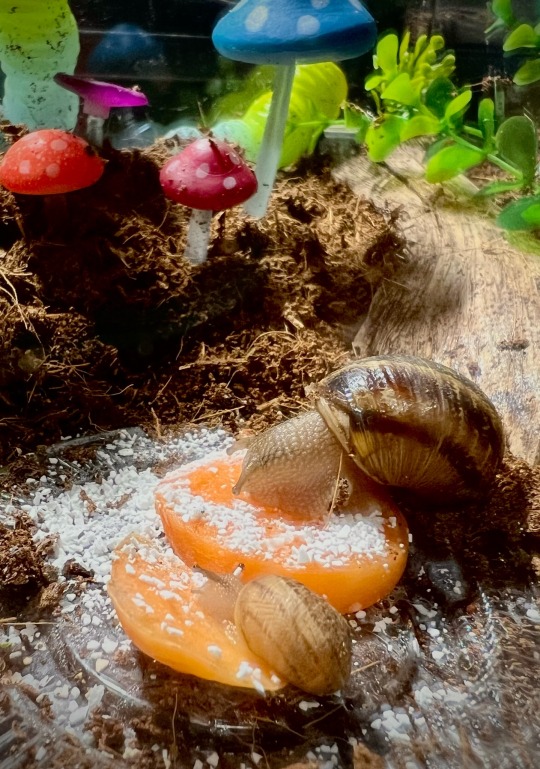



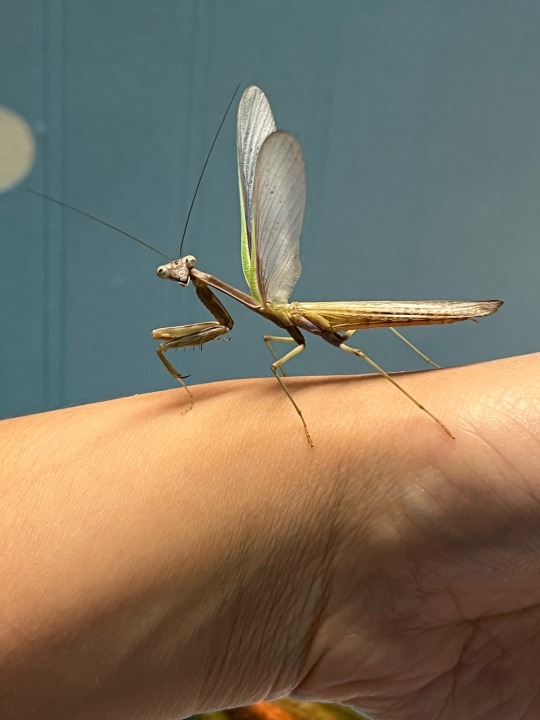
In my vivarium and invertebrate keeping era
15 notes
·
View notes
Text
Unruly hair
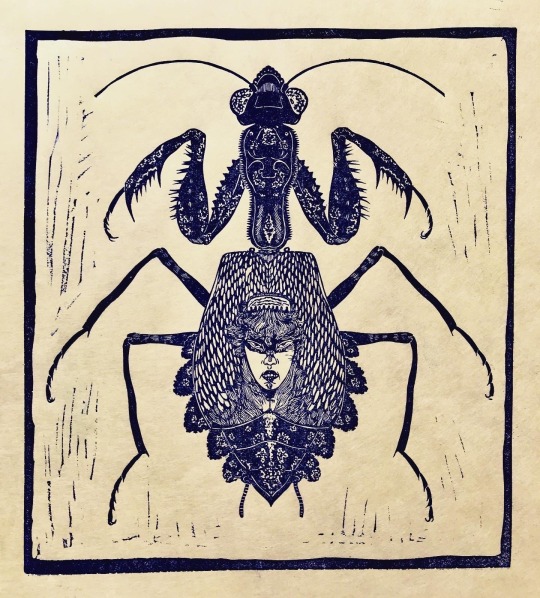
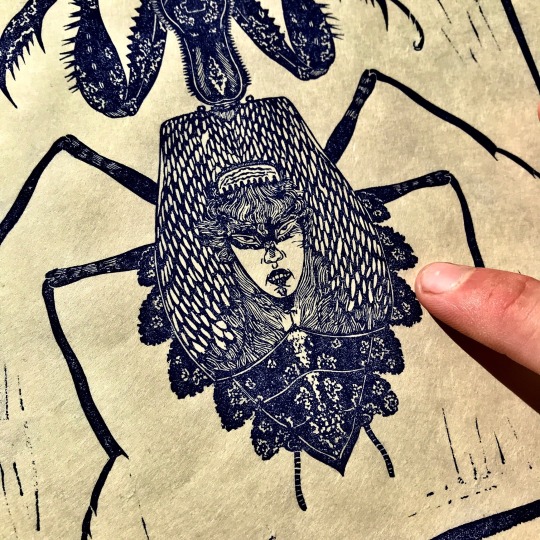
#nature#art#california#mendocino#sonoma#bay area#ink#printmaking#illustration#mokuhanga#praying mantis#insects#bugs#entomology#linocut#linoleum print#linoprint#xilografia#hair
114 notes
·
View notes
Text

#photographers of tumblr#photographers on tumblr#lensblr#photography#original photographers#bay area#norcal#california#fall#autumn#november#insects#praying mantis#animals#aesthetic
18 notes
·
View notes
Text

Lellopepper AW/23 - Aquapricot Saffron
#elise mesner#los angeles#mantis#garden#gardening#bugs#cool#california#autumn#fall aesthetic#fall season#early morning#minimal#photography#wildlife#nature
8 notes
·
View notes
Text
A little bit from my experience at the Tournament in California. 🥋🇺🇸
#project batman#batman#bruce wayne#martial arts#training#exercise#fitness#work out#kung fu#tbt#throw back thursday#chinese martial arts#martial arts tournament#nan quan#choy lay fut#ton long#praying mantis#choy li fut#chan quan#concord california#budoblr#me
7 notes
·
View notes
Photo

Have not seen one of these in a long time. #prayingmantis #mantis #insects #california #insect #nature #insectsofinstagram #bugs #bug #insectphotography #naturephotography #photography #prayingmantises #animals #bugsofinstagram #wildlife https://www.instagram.com/p/ChaPDK7p_lj/?igshid=NGJjMDIxMWI=
#prayingmantis#mantis#insects#california#insect#nature#insectsofinstagram#bugs#bug#insectphotography#naturephotography#photography#prayingmantises#animals#bugsofinstagram#wildlife
2 notes
·
View notes
Text
Over the summer/fall I had a parasocial relationship with (what I thought was) a single praying mantis who lived in my rose garden, until I found TWO egg cases on opposite sides of the yard.
Soon my land shall bristle with ravenous, pointy children.
0 notes
Text
Looking for a mate, and a meal (after decapitation)

My backyard
SculptsO
0 notes
Text
Okay so I’d totally given up on hope of finding a mate for green bean since bacon was a different kind of female but I was sitting outside with my fiancé and our girlfriend last night and as we were chatting I spotted a male small ground mantis (same as bacon) and managed to grab him and then not even 5 mins later I spotted a huge female California mantis (same as green bean) and after a few stressful mins of trying to gently catch her before she could fly away we managed to get her to! I’m so excited we might be able to get both pairs to mate when the time comes which should be very soon!😁
#the female California mantis is so big 😳#I need to get big jars set up for the new ones rn they just in tiny jars with no dirt or plants#I’m crediting beautiful girlfriend for the luck#mine#personal
0 notes
Text
fears, flying, and facts | s.r

summary: in which spencer spews random facts; one helpful and one... not so helpful
request: hi, are you still taking requests? if you are, can you write something with spencer comforting the reader because she has a fear of heights?
requested by: @midnightreids
pairing: spencer reid x reader
category: fluff
content warnings: little bit of anxiety in the beginning, resolves quickly!
word count: >500

"Not a fan of flying?"
The voice of Spencer Reid made the girl jump, as if she wasn't shaky enough due to the ongoing turbulence. "Uh, just a bit." She tried to laugh to hide how scared she was, but who was she kidding? She was in an enclosed space, 30,000 feet in the air with a bunch of profilers.
There was no hiding her undeniable fear of flying.
"You know, it's not bad. There's less to worry about flying than there is driving." The girl looked up at him in curiosity, urging him to continue. "I mean, what we really need to worry about are microbursts - a sudden downburst of air associated with thunderstorm. But a small aircraft like this, if we hit one of those at the wrong altitude," he stops, mimicking an explosion with his fist and mouth, making Y/N tighten her seatbelt more than it already was, practically squeezing her stomach against her ribs.
"Alright, I think she gets it." Derek pats Spencer on the back, and Reid moves his eye contact from Derek to Y/N, now noticing how scared she looked.
"Oh, gosh, uh, I'm so sorry. Usually my facts don't scare you that bad." He joked. "Spence, it's okay. Usually your facts aren't about things I'm deathly afraid of." She jokes back, cracking a light smile. "Why don't you tell me something else?"
Spencer lights up at this, thanking the universe he finally got a chance to spew some random fact that had been stored up in his genius brain for who knows how long.
"The praying mantis can kill and eat a multitude of creatures but the most interesting fact is that oftentimes the female mantis engages in sexual cannibalism, meaning she’ll bite off the head of her mate once copulation is complete, sometimes even during intercourse, actually."
Y/N looked at the man in disbelief. "Huh. I had no idea, that's... strangely interesting." She laughs softly. "I guess I know I can always count on you for weird facts, huh?" Spencer nodded excitedly, thankful someone actually wanted to hear him talk about the random things his brain stores.
So, that's what he did. He spent the rest of the flight from Virginia to California telling Y/N random facts to keep her distracted from her surroundings.

r is typing...
thank you so much for the request! i could really only write a blurb about this certain scenario, but i'm really happy with how it turned out!
r is signing off...
join the taglist here!
taglist: @elsiebishh @liltimmyst @psychosociogentleman @conniesanchor @cynbx @dreaminginpastels
#requests open#reqs open#spencer reid x reader#request#matthew gray gubler#spencer reid fanfic#spencer reid#dr spencer reid
473 notes
·
View notes
Text
Making Better State Insects
So at some point I stumbled across a list of State Insects. Honestly I wasn't even aware states had "state insects", but as I looked down the list my disappointment grew. A vast majority of states had selected the European honeybee (which is not even native) as their state insect, with monarch butterflies and ladybugs being the two runner ups. I thought this was a damn shame because there's so many interesting insects in the US, so I'm making a better official new list of state insects.
For this list my criteria are:
Insect must be native to the state
No repeats
Insect must be easily observable to the naked eye
I also had general guidelines of picking insects that were relatively common (based on inaturalist heat maps of observation) and picking insects that were cool or interesting. Some of these insects I picked because I thought they were important parts of the areas culture and experience (lovebugs, toebiters, and periodical cicadas) and some insects I picked just to raise awareness that they exist in the US.
I also don't think I gave anyone huge L's, no mosquitoes, louses, cockroaches, ect, because my goal of this list is to get people interested in their native insects and I want it to be fun to find and observe your state insect.
Also some states get gold stars for picking state insects that already meet these criteria and are cool so they get to keep theirs. Some states also have "state butterflies" or "state agricultural insect" which for this list I'm ignoring, you can keep those I'm just focused on state insects. Slight disclaimer also, I've only ever lived in California, Nevada, Oregon, Washington, and South Carolina, and all these states are keeping their original state insect. So all the insects I'm choosing are for states I haven't lived in. Also I'm not including photos in this post just for my own sanity.
List under the cut!
Alabama
Old: Monarch Butterfly
New: Giant Leaf-footed Bug (Acanthocephala declivis)
Leaf-footed bugs are cute, they're big, they're stanced up, the males have big back legs, you've probably seen them. Being true bugs they have piercing mouthparts and suck plant juices.
Alaska
Four-spot Skimmer (Libellula quadrimaculata)
Alaska gets to keep their old state insect, it's a cool dragonfly and apparently was partially chosen to honor bush pilots who fly to deliver supplies in the Alaskan wilderness, so really cool!
Arizona
Two-tailed swallowtail butterfly (Papilio multicaudata)
Arizona also gets to keep their state insect. Kind of a shame because Arizona has a lot of cool species, but it did meet my requirements and they get points for choosing a different kind of butterfly.
Arkansas
Old: European honeybee
New: North American Wheel Bug (Arilus cristatus)
One of the largest assassin bugs in the US, these guys are appreciated by gardeners for their environmentally friendly pest control. They also look badass.
California
California Dogface Butterfly (Zerene eurydice)
Endemic to California and on a stamp! Again, kind of a shame because there's a lot of cool insects in California, but I respect this choice, especially since California was the first state to designate a state insect (1929).
Colorado
Colorado Hairstreak Butterfly (Hypaurotis crysalus)
Same deal as California, the state's name is in the common name, unique butterfly found in the four corners region. Just get a stamp or something soon!
Connecticut
Old: European Praying Mantis
New: Cecropia Moth (Hyalophora cecropia)
You picked a state insect no one else had but went with a nonnative mantis? Here's an insect that'll make you stand out and it's a native species. Lesser known than some of the other giant silk moths, the Cecropia moth is the largest native moth and has some truly stunning colors.
Delaware
Old: Convergent Ladybeetle
New: Periodical Cicada (Magicicada septendecim)
Cicada's had to be somewhere on this list and Delaware was one of the main hotspots for brood X, one of the largest broods of the multiple staggered brood cycles. Hey, they have a lot of history in America. Accounts go back as early as 1733, with Thomas Jefferson and Benjamin Franklin making a note of them.
District of Columbia
Old: None
New: Monarch Butterfly (Danaus plexippus)
The Entomological Society of America is trying to get the Monarch Butterfly added as our national insect, so I think that's reason enough to let DOC claim it.
Florida
Zebra Butterfly (Heliconius charithonia)
Florida gets to keep their state butterfly, but the populations that have existed in Florida are in steep decline. Ideally I would want being the official state insect to come with some protections, hopefully people can get invested in reintroducing them.
Georgia
Old: European Honeybee
New: Horned Passalus Beetle (Odontotaenius disjunctus)
Also called bess beetles or patent-leather beetles, these cute guys are important for forest systems because they eat decaying wood, helping to break down felled trees. They're cute beetles that squeak when disturbed.
Hawaii
Kamehameha Butterfly (Vanessa tameamea)
An endemic Hawaiian butterfly named after a ruling dynasty of Hawaii. Their population is under threat, as with a lot of native Hawaiian species, so I think this is a good state insect to build protections and activism around.
Idaho
Old: Monarch Butterfly
New: Ice Crawler (Grylloblatta sp. "Polaris Peak")
Look Idaho, I have to admit that even though I've traveled extensively through WA, OR, CA, and NV I've never stepped foot in Idaho and I don't intend to. Your state exists in a weird liminal zone, not really the pacific northwest but not really whatever Montana is either. Your state isn't even all in one time zone. So look, I really wanted ice crawlers to be on this list, but they're exclusively found on mountains in the pacific northwest and Sierra Nevadas. Normally I would've given them to Washington or Oregon, but those states already have state insects that work for them. So your state gets ice crawlers, and they do exist in Idaho in the panhandle. It's not an L, ice crawlers are amazing extremophiles that crawl over snow in high elevation mountain peaks. They exist in their own unique order and theres only one genus in the US, with different species being region locked, sometimes onto specific mountains. Their thermoregulation is so delicate, the warmth of someones hand holding them causes them to over heat and die. They're cool, unique, and weird, and let's face it so is your state. At least I didn't take a cop out by picking the potato bug.
Illinois
Old: Monarch Butterfly
New: Red-banded Leafhopper (Graphocephala coccinea)
Leafhopper done Chicago style.
Indiana
Old: Say's Firefly
New: Common True Katydid (Pterophylla camellifolia)
I wanted to give you Say's Firefly. I really did. But when I looked on Inaturalist not A SINGLE OBSERVATION was listed for the species in Indiana. I'm even going to post pictures.
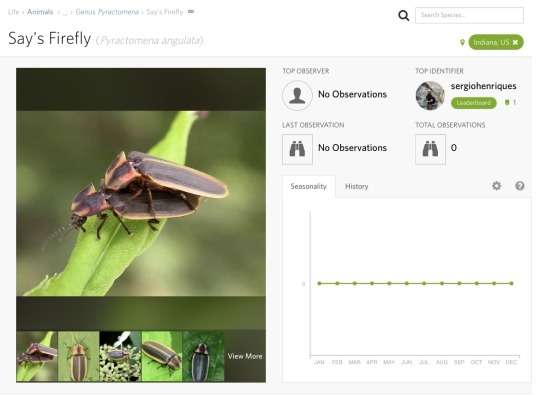
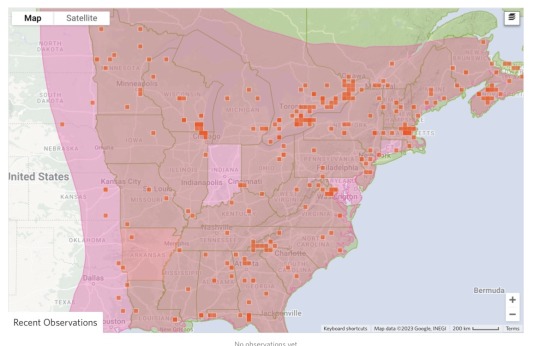
So even though this is extremely funny I'm giving your state the Common True Katydid instead. Large, loud, and easy to spot, these guys can frequently be heard chirping in trees. Not only do different populations have different rates of chirp, but the rate of chirp is also so predictably dependent on temperature that you could make an equation to tell the temperature based on chirp rate.
Iowa
Old: None
New: Westfall's Snaketail (Ophiogomphus westfalli)
Really cool clubtail dragonfly that's almost exclusively found in Iowa, Missouri, and Arkansas.
Kansas
Old: European Honeybee
New: Rainbow Scarab (Phanaeus vindex)
A kind of true dung beetle, they play an important role in removing waste. And although they don't roll waste like the stereotypical dung beetles, they are extremely pretty.
Kentucky
Viceroy Butterfly (Limenitis archippus)
This is fine.
Louisiana
Old: European Honeybee
New: Lovebug (Plecia nearartica)
Look, one of the southern states was going to get this one and Louisiana has a majority of the observations for them. Although annoying, it's things like having to scrape thousands of flies off your car that makes the Southern experience. Embrace it!
Maine
Old: European Honeybee
New: Brown Wasp Mantidfly (Climaciella brunnea)
I really wanted these guys to be somewhere on the list. Neither a wasp, mantis, or fly, these are predatory neuropterans related to lacewings. They have raptorial front legs (resembling a mantis) and their coloration resembles paper wasps that they live alongside. Weird, unique, and wonderful!
Maryland
Baltimore Checkerspot Butterfly (Euphydryas phaeton)
This butterfly might've been picked for the resemblance of the state flag. It's in decline in it's native range, so hopefully more awareness and consideration to state insects will help push conservation efforts.
Massachusetts
Old: Ladybug
New: Hornet Clearwing Moth (Paranthrene simulans)
Hornet mimic moth, the caterpillars feed on chestnuts and oaks. All lepidopterans (moths and butterflies) have modified hairs on their wings that form the "scales" that give this order their name. For this moth though, parts of it's wings don't have any scales so it more convincingly resembles a hornet. Underneath the scales, butterfly and moth wings look pretty much like any other insect's wing. Cool!
Michigan
Old: None
New: American Salmonfly (Pteronarcys dorsata)
The biggest salmonfly in North America. They make excellent fishing bait, and several fly fisherman use salmonfly lures to catch trout. Their nymphs are also an important indicator of water quality, with them being one of the first species to disappear in the presence of pollution or contaminants.
Minnesota
Old: Monarch Butterfly
New: American Giant Water Bug (Lethocerus americanus)
Also one of the ones that had to be on the list somewhere, and the Inat heatmap says Minnesota. Toebiters are part of the experience, and they are cool and ferocious looking.
Mississippi
Old: European Honeybee
New: Eastern Eyed Click Beetle (Alaus oculatus)
Click beetles have a cool adaption that allows them to launch themselves in the air to avoid predators. This makes an audible sound, hence their common name. The Eastern Eyed Click Beetle is one of the largest and most striking click beetles in the US, with large false eyespots on their thorax.
Missouri
Old: European Honeybee
New: Goldenrod Soldier Beetle (Chauliognathus pensylvanicus)
A soldier beetle that feeds on aphids and small plant pests, these beetles also eat pollen and nectar from flowers. They don't harm the flower, and though their common name reflects their preference for goldenrod flowers, they're also an important pollinator of the prairie onion (Allium stellatum). This is a native species of onion that grows from Minnesota to Arkansas.
Montana
Old: Mourning Cloak
New: Western Sheep Moth (Hemileuca eglanterina)
Mourning Cloak butterflies do technically work for my criteria, but I wanted to showcase some more regional insects in this as well, as Mourning Cloaks are found throughout North America and Eurasia. The Western Sheep Moth is an absolutely stunning giant silk moth, found throughout the western United States. Although not as big as some other silk moths, the bold orange and black coloration on these make them absolutely stand out.
Nebraska
Old: European Honeybee
New: Blowout Tiger Beetle (Cicindela lengi)
A tiger beetle with unique patterns, these guys are active predators and are particularly difficult to spot because they run extremely quickly. They seem to be pretty cold tolerant and exist from Colorado up into Canada.
Nevada
Vivid Dancer Damselfly (Argia Vivida)
This damselfly was picked as Nevada's state insect because it's widespread throughout the state and matches the state colors, silver and blue. That gets my seal of approval!
New Hampshire
Two-spotted Lady Beetle (Adalia bipunctata)
This is fine.
New Jersey
Old: European Honeybee
New: Margined Calligrapher (Toxomerus marginatus)
A pretty hoverfly, they strongly resemble bees in both looks and behavior. Larvae feed on common plant pests such as thrips and aphids, while the adults sip nectar and pollinate flowers. These helpful attributes make it something the Garden State can appreciate!
New Mexico
Tarantula Hawk (Pepsis grossa)
New Mexico wins the official state insect list by a landslide. Not only is the tarantula hawk a super cool and formidable insect to showcase, but New Mexico's state butterfly (Sandia Hairstreak) was discovered in New Mexico. No notes 10/10!
New York
Nine-spotted Lady Beetle (Coccinella novemnotata)
A native species of lady beetle that's been in decline in recent years, New York is one of the last remaining states where they've been spotted. I also appreciate that New York designated a specific ladybug species instead of just saying "Coccinellidae species".
North Carolina
Old: European Honeybee
New: Eastern Rhinoceros Beetle (Xyloryctes jamaicensis)
A large native species of rhinoceros beetle. They breed in ash trees, and are under threat due to competition from the Emerald Ash Borer.
North Dakota
Old: None
New: Nuttall's Blister Beetle (Lytta nuttalli)
As with all blister beetles, these guys have a chemical defense. Unlike the more famous Bombardier Beetle thought, instead of being black and red they are iridescent red/purple and green.
Ohio
Old: Ladybug
New: Bald-faced Hornet (Dolichovespula maculata)
Look, when the one thing everyone knows about your state is that it sucks, it's time to lean into it. Bald-faced hornets, everyone knows them, everyone has opinions about them, and they get a lot of attention. I don't think I have to explain this one anymore.
Oklahoma
Old: European Honeybee
New: Giant Walking Stick (Megaphasma denticrus)
The largest insect in the United States. Being a native walking stick, they're less damaging than the imported invasive walking sticks that are heavily controlled.
Oregon
Oregon Swallowtail Butterfly (Papilio oregonius)
Oregon in the common name and in the species name, and also has a stamp!
Pennsylvania
Pennsylvania Firefly (Photuris pensylvanica)
Pennsylvania in the common name and species name. If fireflies weren't already on this list I would've made sure to include them somewhere.
Rhode Island
American Burying Beetle (Nicrophorus americanus)
When I saw this on the list I was worried. American Burying Beetles are one of my favorite insects, but they're extremely endangered now. I also thought they existed more in the midwest, so I was worried I would have to change this one because it violated the "native to the region" rule. But! To my pleasant surprise, not only did their historic range extend to Rhode Island, but there is actually a carefully maintained wild population on Block Island. They estimate between 750-1000 individuals live there, making it one of the few remaining places where the American Burying Beetle still exists. Excellent work Rhode Island!
South Carolina
Carolina Mantis (Stagmomantis carolina)
This is fine. I wanted to give South Carolina the Palmetto bug but they're actually not native.
South Dakota
Old: European Honeybee
New: Golden Northern Bumble Bee (Bombus fervidus)
"Save the bees" should really be focused on native pollinators, many of whom are in decline. There are a lot of species of native bee you can feature as a state insect, with the Golden Northern Bumble Bee being a particularly large and striking species.
Tennessee
Old: Firefly and ladybug
New: Black-waved Flannel Moth (Megalopyge crispata)
Seriously look them up, these guys are adorable.
Texas
Old: Monarch Butterfly
New: Rainbow Grasshopper (Dactylotum bicolor)
It was really hard to pick an insect for your state. The Texas Unicorn Mantis was a contender but I eliminated it because it's really only found in the southern part of Texas, so it was between the Rainbow Grasshopper and the Eastern Velvet Ant (or Cow Killer). I went with the Rainbow Grasshopper because it's more wide spread and common, and occurs everywhere except the east part of Texas. But the Eastern Velvet Ant only occurs on the east part of Texas, maybe you should get an East and West Texas insect? I also thought more people have probably already heard of the Eastern Velvet Ant than the Rainbow Grasshopper, which is a shame because they're super interesting to look at.
Utah
Old: European Honeybee
New: Mormon Cricket (Anabrus simplex)
Mormon Crickets are not true crickets, and instead closer related to katydids. Their common name comes from an early account of Latter-day Saint settlers in Utah. In 1848, a swarm of Mormon Crickets decimated the settler's crops, so the legend goes that they prayed for relief from this plague of insects. Later that year, a swarm of gulls appeared and ate the crickets, thus saving the crops. This is recounted in the "miracle of the gulls" story. To recognize their contributions, the California Gull is commemorated as Utah's state bird. I thought it was fitting then that the Mormon Cricket be recognized as your state insect.
Vermont
Old: European Honeybee
New: Long-tailed Giant Ichneumon Wasp (Megarhyssa macrurus)
A pretty wasp with an extremely long ovipositor, these wasps are common in deciduous forests across the eastern United States. They can't sting, and instead use their long ovipositor to stab into tree bark and deposit eggs on the horntail larvae that burrow into the trees.
Virginia
Old: Eastern Tiger Swallowtail Butterfly
New: Giant Stag Beetle (Lucanus elaphus)
A large stag beetle native to the Eastern United States. Although not as well known as their similar looking fellow stag beetles from Japan, these guys are a lovely chocolate brown instead of solid black. Like most stag beetles, they breed in decaying wood.
Washington
Green Darner Dragonfly (Anax junius)
I imagine this was chosen because it matches the flag.
West Virginia
Old: European Honeybee
New: Appalachian Tiger Beetle (Cicindela ancocisconensis)
This tiger beetle likes hilly terrain. As with all tiger beetles, they can be hard to spot because they run across the ground in search of prey. They are fast! But this can make it more rewarding when you finally catch up to one.
Wisconsin
Old: European Honeybee
New: Phantom Crane Fly (Bittacomorpha clavipes)
Don't believe old wive's tales about crane flies drinking gallons of blood, they are nonbiting. Those striking black and white legs are hollow, and are held out when they fly, making an extremely distinct sight that's been likened to sparklers or snowflakes.
Wyoming
Sheridan's Hairstreak (Callophrys sheridanii)
This is fine.
#insect#insects#state insect#long post#list#text post#entomology#bugblr#invertebrates#invertiblr#inverts#invert
190 notes
·
View notes
Note
Hello! Any idea what type of mantis this is? Found laat week in Southern California, U.S.

I'm afraid I can't say which species! You have too many that look too similar in Southern California and I find IDing mantises difficult unless they're obvious ones like the Chinese mantis. I can tell you she's a female! And she's got some wing damage but seems otherwise fine so I hope she gets to make 9000 babies :)
73 notes
·
View notes
Text
more hivewing hcs!! we see in the books that the different hives have very different cultures bc of the different rulers. so, they have stereotypes and jokes based on the hives.
tsetse hive is like the florida of pantala. the news is constantly ridiculous headlines like "tsetse dragon spotted shoplifting with lion rug on head, making lion noises" it's memed to hell and back.
a very common joke is that yellowjacket hive doesn't exist. it's right in between two of the most interesting hives, and is generally ignored. 'yellowjacket hive? what's that??' is usually the response when it's mentioned. it's also sometimes called the hurricane hive, bc it's right in the path of weather coming from the northeast, and not as secure as wasp hive. flooding is common, and repairs are often needed.
wasp hive is obviously the most strict hive, and also the most expensive. dragons there are seen as snotty and stuck up. jokes tend to be avoided during wasps reign.
jewel hive is, of course, the fashion hive. it's kind of similar to california. it's right next to the beach, and it's the most progressive hive.
bloodworm hive is known as the worst hive to live in. all of the strictness of wasp hive, with none of the benefits. dragons from here are seen as grumpy.
mantis hive is canonically the smart hive. they're seen as the nerds, and can be kind of annoying. 'um actually,,' is often used to make fun of them.
cicada hive is the normal hive. they're called boring, and treated like ohio. a lot of jokes about how everyone hates them. there's a popular candle shop that made hive candles, and theirs was unscented.
hornet hive lives up to its name, in that everyone there is always angry. hornet dragons will fuck you up. they're always ready to fight, and most of the news is 'fight at public event'. they're sorta like new york.
vinegaroon hive is the actually ignored hive. everyone always forgets about them, including the queen. poor vinegaroon hive.
feel free to use these in your work! add on any of your own ideas!!
#hivewings#hivewing wof#wof#wof headcanon#wings of fire#wings of fire headcanon#wof hivewing#wof hives#hives wof#zdae thinks
286 notes
·
View notes
